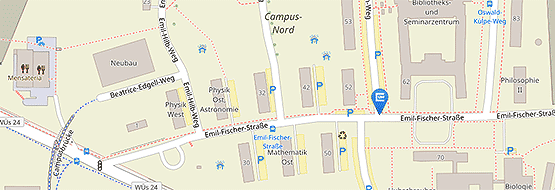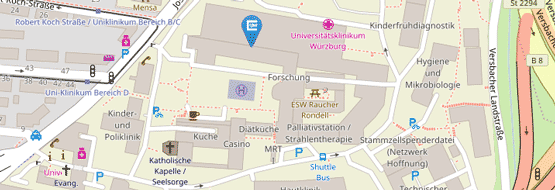Kidney Cancer: Immune Patterns Determine the Success of Therapy
10/14/2025Researchers at the University Hospitals of Würzburg and Erlangen have taken an important step towards more precise treatment of metastasised renal cell carcinoma.
Renal cell carcinoma is the most common form of kidney cancer in adults. It develops in the cells of the renal tubules and can spread to other organs such as the lungs, liver or bones in advanced stages.
Thanks to modern immunotherapies, the prognosis for those affected has improved significantly - many can now live with the disease for several years. However, one in five people do not respond to initial treatment with immune checkpoint inhibitors. In a further 20 per cent, the cancer becomes active again within the first year.
"The choice of first-line therapy is currently mainly based on a clinical risk assessment that takes into account the course of the disease, laboratory values and general condition," explains Dr Charis Kalogirou, Managing Senior Physician at the Clinic of Urology and Paediatric Urology at the University Hospital of Würzburg (UKW). "However, there is increasing evidence that the response to treatment depends more on the nature of the tumour and the spatial and cellular complexity of the tumour microenvironment than on the clinical risk."
Maps of the Tumour Reveal Hidden Immune Patterns
To get to the bottom of this mystery, Kalogirou and his team analysed tissue samples from twelve patients with metastatic renal cell carcinoma who were treated at the Würzburg Urology Clinic.
By using high-resolution spatial transcriptomics, the researchers were able to create detailed "maps" of the tumour and its metastases. The maps show which and how many immune system defence cells are present in the tumour environment, how active they are and how close they are to the cancer cells. The results have been published in the Journal for ImmunoTherapy of Cancer.
"We found that there is not just one immune state in the kidney tumour, but different local environments with their own profiles," reports Charis Kalogirou, first author of the study. Even tumours that were considered the same according to conventional classification showed considerable differences between individual patients and even within a tumour.
Particularly surprising: primary tumours and metastases differed significantly in their cellular composition and spatial arrangement.
"Almost two years ago, we were able to establish similar correlations for urothelial carcinoma - and now also for renal cell carcinoma," adds Associate Professor Dr Markus Eckstein, Managing Senior Physician at the Institute of Pathology at the University Hospital Erlangen and last author of the study. "In particular, analysing the immune microenvironment of the metastases is highly relevant for the response to immunotherapies and could significantly improve therapy selection in the future."
Favourable Immune Niches Predict Therapy Success
The key discovery: in the metastases, the researchers were able to identify so-called immune niches - areas in the tumour tissue in which macrophages and CD8+ T cells interact intensively with each other through chemokine signals. "Patients with these niches in their metastases responded significantly better to immunotherapy," explains Kalogirou. "In the original kidney tumours, on the other hand, this favourable niche hardly ever occurred."
A gene signature derived from these findings was also able to reliably predict the response to therapy in independent international studies involving more than 1,000 patients. In areas that remained resistant to the therapy, however, genes that represent a suppressed immune response dominated. In addition to the type of cells, their spatial arrangement was also decisive - i.e. how close the immune cells are to the tumour cells and which genes they activate.
More Precise Therapy Selection Within Reach
"So it is not enough to know that there are immune cells in the tumour. It is also crucial to know where they are and how they work," summarises Charis Kalogirou. Analysing metastasis biopsies could help to better predict in future whether patients will benefit from immunotherapy. If not, patients would be spared less effective treatments or treatments with many side effects.
"This is an important step towards a more precise, biomarker-driven cancer therapy," Kalogirou is convinced. The integration of spatial analyses of the tumour microenvironment in future studies could significantly advance personalised immunotherapy for metastatic renal cell carcinoma.
Publication
Kalogirou C, Krebs M, Kunz AS, Hahn O, Kübler H, Schwinger M, et al. Spatial transcriptomic profiling of metastatic renal cell carcinoma identifies chemokine-driven macrophage and CD8+ T-cell interactions predictive of immunotherapy response. Journal for ImmunoTherapy of Cancer, 2 October 2025, Open Access: https://doi.org/10.1136/jitc-2025-012991







